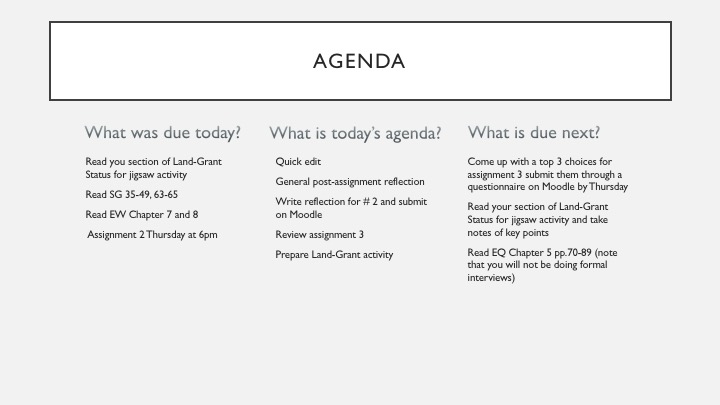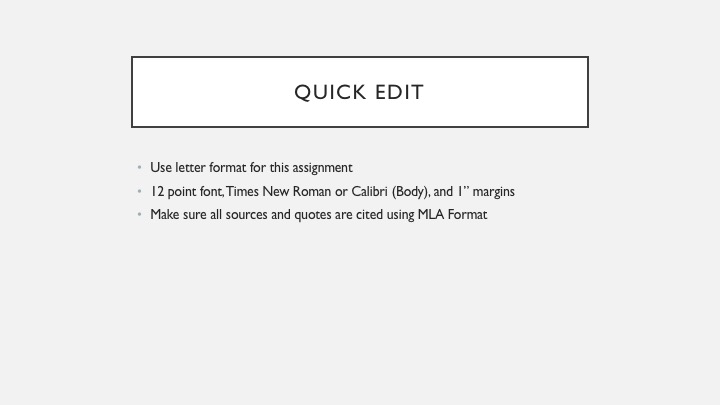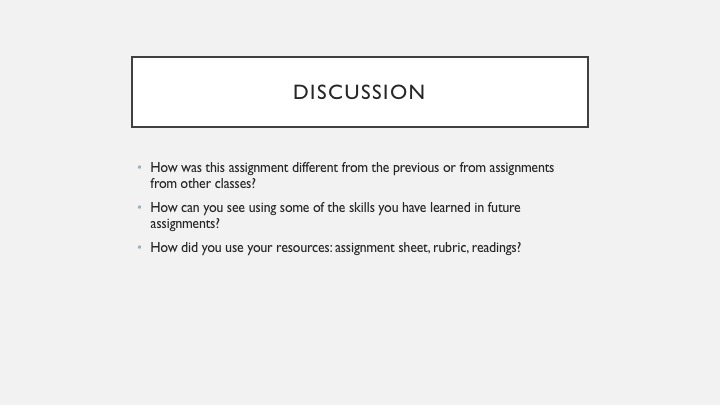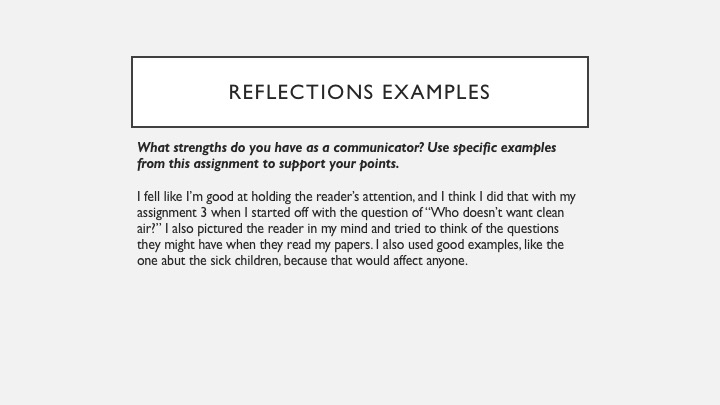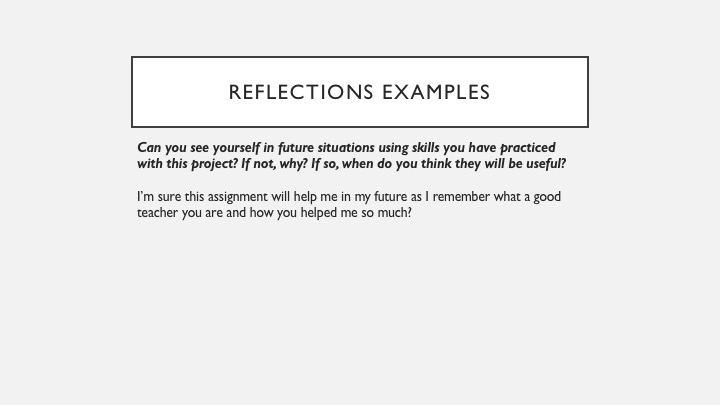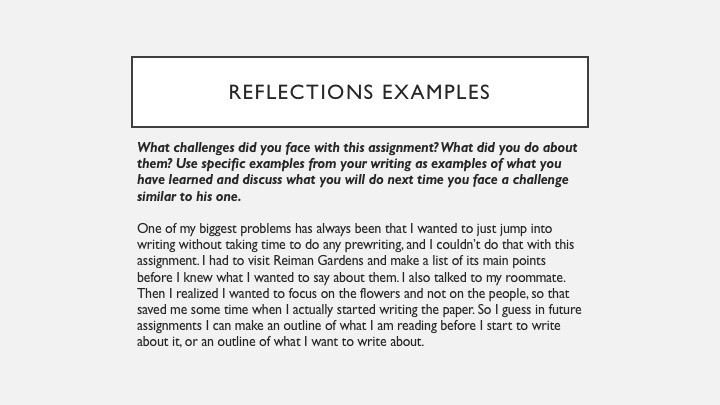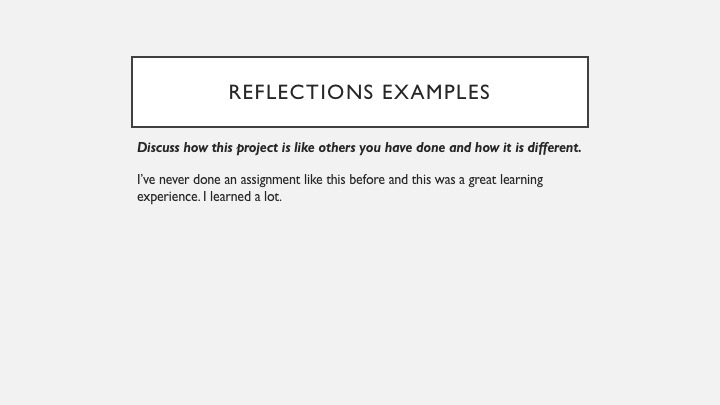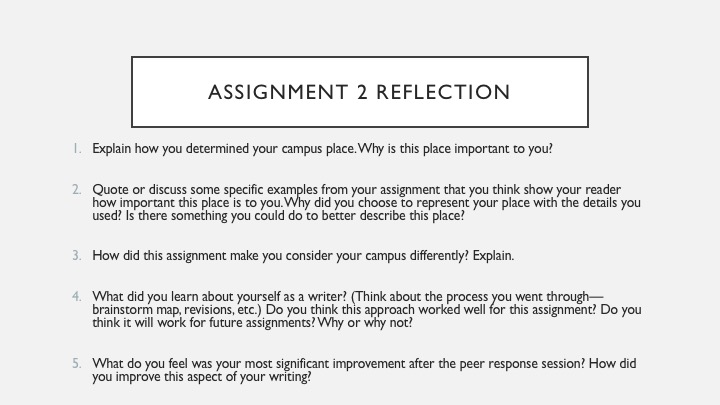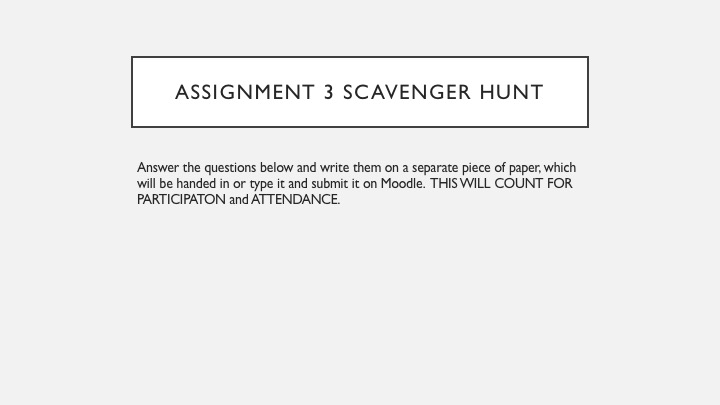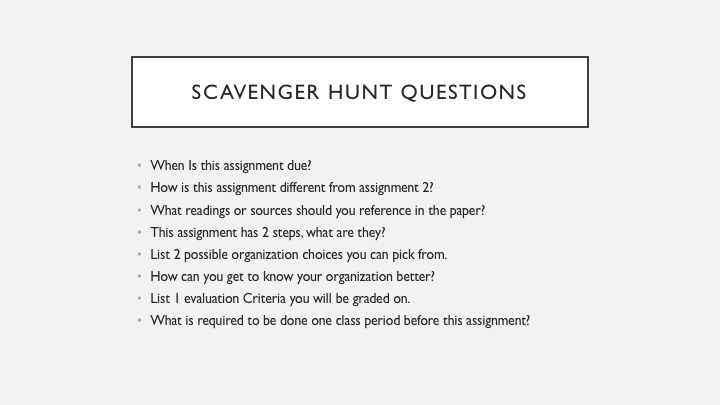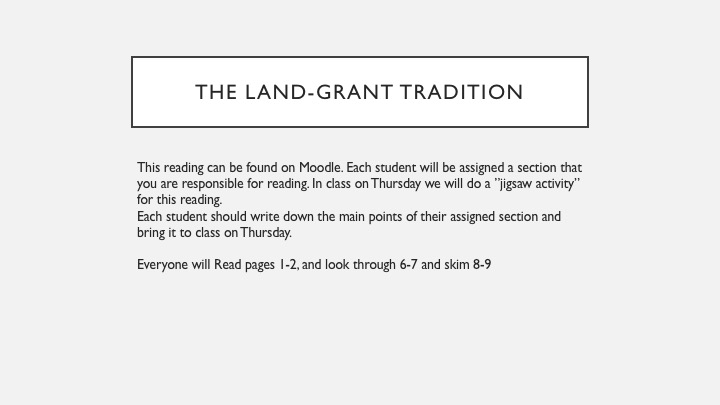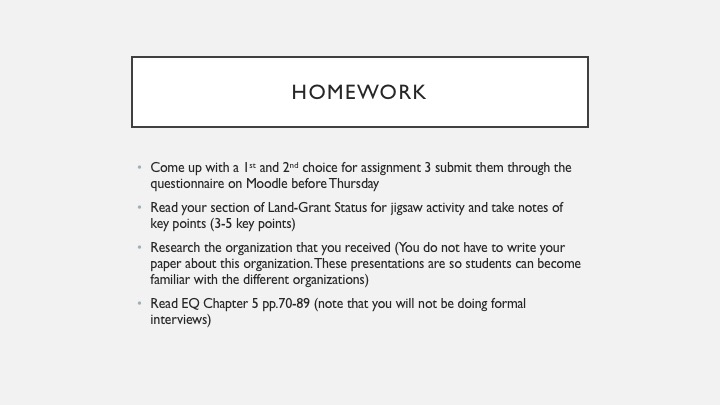Lesson Title: Wrapping Up Assignment #2
Date: September 8, 2016
Lesson Location: Computer Lab
Objectives
- Making connections with what they have learned and how they can use it for future assignments
- Work on reflections that will be included in their ePortfolios
- Learn on to find important information on Assignment instruction sheets.
Materials
- Laptop
- Discussion Questions (on PowerPoint)
- Reflection Examples (on PowerPoint)
- Assignment 2 Reflection Questions (on PowerPoint)
- Scavenger Hunt Questions (handout or on PowerPoint)
- Pieces of Paper with Different reading assignments from the land-grant, with letter and numbers. Groups with same readings are labeled 1-6 and each group has an A-D person. This paper will also include the name of one random organization that the student will need to find information on to give a 1-2 minute presentation on in the next class(2-3 people per organization).
| Class Structure | Teaching Points | Time |
| Instructor Led | Welcome & Agenda | 5 minutes |
| Individual | Quick edit & Submit Assignment #2 | 20 minutes |
| Whole Class | General Reflection / Discussion | 10 minutes |
| Instructor Led / Whole Class | Reflection Examples | 10 minutes |
| Individual | Write Reflection for Assignment #2 | 18 minutes |
| Instructor Led / Individual | Introduce Assignment #3 / Scavenger Hunt | 10 minutes |
| Instructor Led | Prepare Land-Grant / Informal Presentations | 5 minutes |
| Instructor Led | Closing & Homework | 2 minutes |
Assignments For Next Meeting
- Read your section of the Land-grant and take notes of the key points
- Find information about the organization from your paper
- Read EQ Chapter 5 pp. 70-89
Contingency Plan
More time to work on reflections or adding the reflection to their ePortfolio.
Assessment of Concept Development
Listening to the discussion to see if people understood the assignment and if they are made good connects.
Reflection
The lesson went well, but I noticed some confusion during the next class period. I need to specify how many key points because some students wrote a page long summary. Also I had written the organization on the back of the paper and even though I mentioned it in class, some students just looked at whatever organization they wanted. Another change would be to have the groups of 3 work on harder topics instead of randomly having an organization be a group of 3.
Post Commentary
This Lesson Plan is from the last day of Assignment #2 and took place in the computer lab. Students should have their “final” draft of their letter about a campus place done. The class started with a quick-edit. This was to give the students times to read through their finished paper and double check for errors. They could also choose to have another student read through it, if they thought that would be more helpful and then make corrections. After the quick edit, students could choose to submit their paper if it was finished or they could keep working on it until Friday at 6pm, which was the actual deadline. Next, the class did a general reflection through class discussion. The question prompts were shown in the PowerPoint and we discussed as a whole class. Then the formal reflections were introduced and example reflections were shown (in the PowerPoint). The students were asked to read the reflection and decide whether is is a good example or a bad example. Then students would share what they did well or what would need to be fixed. After finishing the discussion of what makes a good reflection, students were given prompts to write their own reflections of how they thought Assignment #2 went. Then concluded the class time that we would spend Assignment #2.
After the reflections, I introduced assignment 3 and explained it briefly. Students then did a “scavenger hunt” of the assignment 3 instructions sheet. I put questions up in the PowerPoint and students needed to find the information in the instructions and write them down. This would be handed in for participation points. Once everyone completed the scavenger hunt, we went through the answers as a class to insure that everyone knew the correct information. The last thing was to briefly explain the land-grant jigsaw activity and informal presentation that they would be doing during the next class period, and to hand out the papers with the specific section they were in charge of reading and the organization they would present over.
Overall, the lesson went really well. Students worked during the quick edit and almost everyone was able to submit their assignment during class time. Some students asked questions about MLA formatting which I could answer before they submitted. Students also did a great job at participating in the discussions.
One thing that I would change for next time, is making time for students to meet the other person/people who they would be presenting with and allow them to begin researching or discussing their organization/presentation.
Another thing I would change would be the way I assigned the organizations. I had them written on slips of paper with the jigsaw assignment and students would grab a slip at random. While I liked that is was random, it would be really nice to know who was assigned which organization. I noticed in the following class period that some students were not in the correct group, but I was not sure what group they were assigned so I couldn’t try to correct it.
Lastly, I think it would be helpful to have students write their reflections directly into their ePortfolios instead of writing them on paper or submitting them in a drop box. I would have the students start a blog page where they write their reflections for every assignment and be a component to their ePortfolios. It would also eliminate papers I have to collect and them needing to keep track of the reflections until the end of the semester.
I think that this lesson is a good example of how I teach. I like to have a mixture of discussions and group/class discussions. I also try to give students time to work in class because many can benefit from extra time, and it allows them to discover and ask questions they might have about the assignment. This is especially important because I do not have any students emailing me questions or coming to office hours, so I want to make sure I always leave time for questions in class and let them know it is ok to ask questions. The scavenger hunt was also designed to insure that students know the information about the assignment or at least know where to look if they have a question. I want to provide students with support and encouragement.
